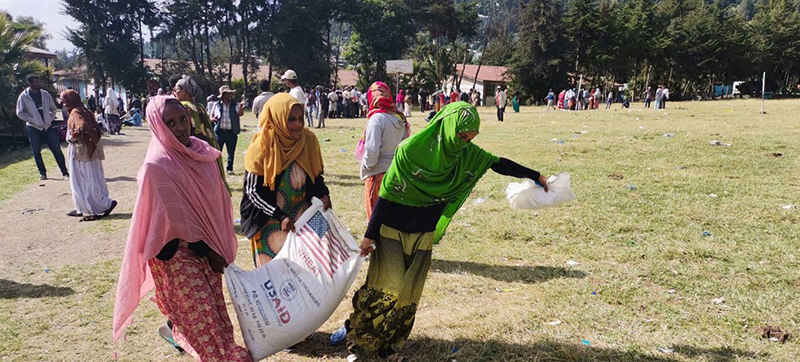Ethiopia: Northern aid access improving but some areas still hard to reach

New York: UN humanitarians on Thursday reported that aid access in the north is continuing to improve with aid operations expanding following last November’s ceasefire agreement, but some civilians in the battle-scarred region “remain hard to reach.”
Associate Spokesperson Florencia Soto Niño told correspondents at the regular noon briefing in New York that aid distribution had expanded in the Afar, Amhara and Tigray regions, but some pockets remained that have not yet been accessed.
Relief for 3.8 million people
“Since the Cessation of Hostilities agreement in mid-November, more than 127,000 tons of food have been brought into Tigray, reaching more than 3.8 million people”, she said.
According to the latest Situation Report from UN aid coordination office OCHA, between 12 and 18 January, around 400,000 people received food assistance in Tigray.
Fighting continues in Amhara
Humanitarians say that fighting in parts of southern Amhara and neighbouring areas of Oromia region, have led to “significant displacement” in the zones of North Shewa, South Wello and West Gojam, in Amhara.
OCHA reports that in those regions of Amhara, “a significant number of houses and private properties have allegedly been burned down and destroyed. Partners are mobilizing food and non-food items such as emergency shelter, amidst road closure and ongoing hostilities.”
Away from the former battlefields of the north, where more than two years of conflict between Government forces and Tigray rebels left thousands dead, and millions displaced, an “historic drought” continues to ravage southern and eastern regions of Ethiopia, she said.
Aid plan to reach 17 million
“We and our partners aim to reach 17 million people with food, water, health and agriculture support, among other assistance.”
And in part of Oromia and Somali region, in central and southern Ethiopia, there have been more than 1,000 cases of cholera reported so far, with more than a million people considered to be “at high risk”, said the Associate Spokesperson.
“An oral cholera vaccination campaign has been launched, and 33 per cent of the people they intend to assist, have been reached so far”, she added, noting that extra funding for widescale vaccination was critical, given the scale of need.
Malaria compounds health challenges
In a worrying sign, some 19 districts in Afar, during January have exceeded the malaria monthly average threshold of the previous five years.
And an estimated 106,000 students are being affected by a lack of water supply in schools in Shebelle Zone, in Somali, due to the drought.
Financial requirements for lifesaving humanitarian support is still being finalized and expected to remain high, she said, pointing out that last year, the humanitarian appeal for Africa’s second most populous country, received less than half the $3.3 billion needed.



